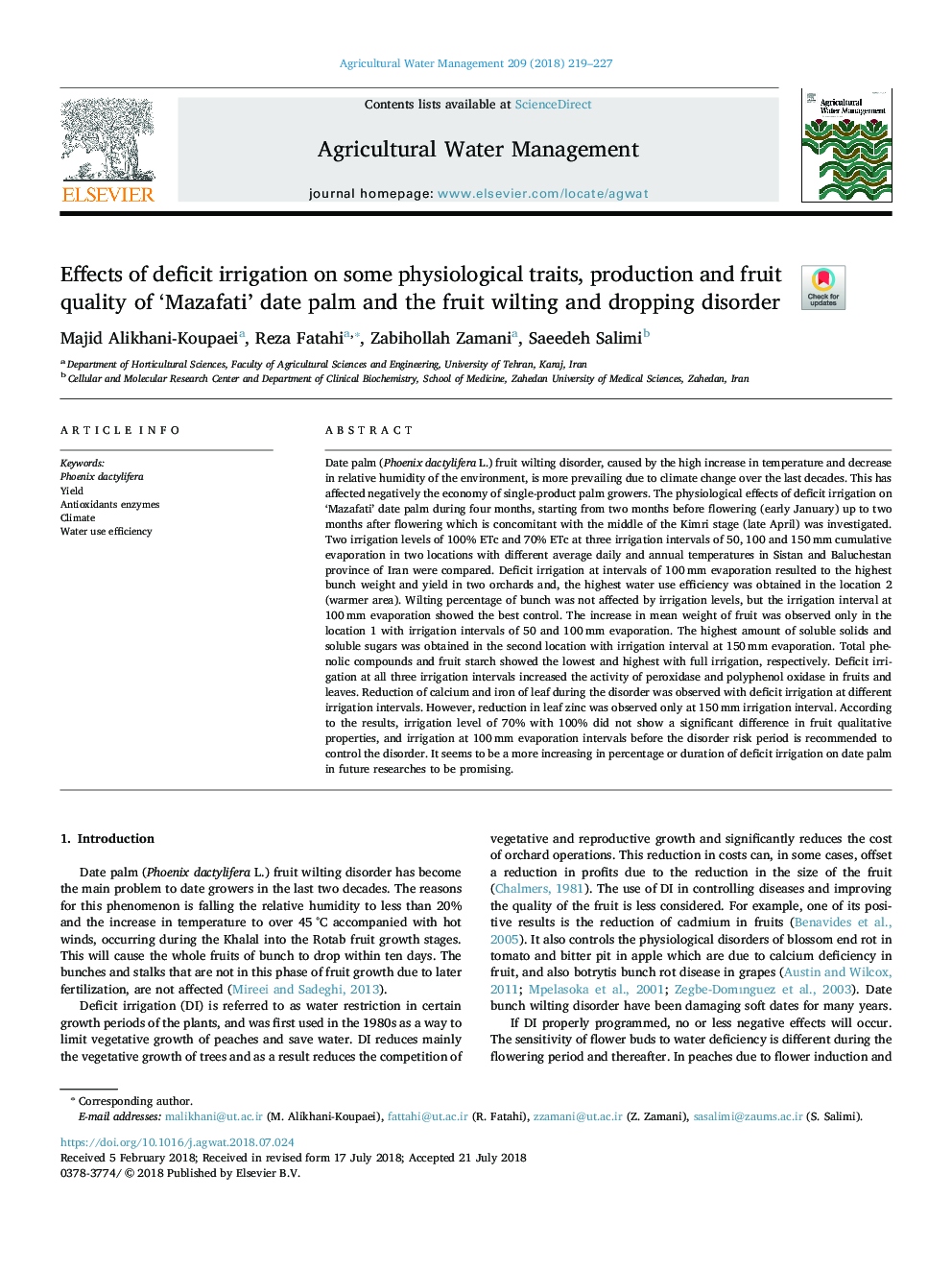| Article ID | Journal | Published Year | Pages | File Type |
|---|---|---|---|---|
| 8872784 | Agricultural Water Management | 2018 | 9 Pages |
Abstract
Date palm (Phoenix dactylifera L.) fruit wilting disorder, caused by the high increase in temperature and decrease in relative humidity of the environment, is more prevailing due to climate change over the last decades. This has affected negatively the economy of single-product palm growers. The physiological effects of deficit irrigation on 'Mazafati' date palm during four months, starting from two months before flowering (early January) up to two months after flowering which is concomitant with the middle of the Kimri stage (late April) was investigated. Two irrigation levels of 100% ETc and 70% ETc at three irrigation intervals of 50, 100 and 150âmm cumulative evaporation in two locations with different average daily and annual temperatures in Sistan and Baluchestan province of Iran were compared. Deficit irrigation at intervals of 100âmm evaporation resulted to the highest bunch weight and yield in two orchards and, the highest water use efficiency was obtained in the location 2 (warmer area). Wilting percentage of bunch was not affected by irrigation levels, but the irrigation interval at 100âmm evaporation showed the best control. The increase in mean weight of fruit was observed only in the location 1 with irrigation intervals of 50 and 100âmm evaporation. The highest amount of soluble solids and soluble sugars was obtained in the second location with irrigation interval at 150âmm evaporation. Total phenolic compounds and fruit starch showed the lowest and highest with full irrigation, respectively. Deficit irrigation at all three irrigation intervals increased the activity of peroxidase and polyphenol oxidase in fruits and leaves. Reduction of calcium and iron of leaf during the disorder was observed with deficit irrigation at different irrigation intervals. However, reduction in leaf zinc was observed only at 150âmm irrigation interval. According to the results, irrigation level of 70% with 100% did not show a significant difference in fruit qualitative properties, and irrigation at 100âmm evaporation intervals before the disorder risk period is recommended to control the disorder. It seems to be a more increasing in percentage or duration of deficit irrigation on date palm in future researches to be promising.
Related Topics
Life Sciences
Agricultural and Biological Sciences
Agronomy and Crop Science
Authors
Majid Alikhani-Koupaei, Reza Fatahi, Zabihollah Zamani, Saeedeh Salimi,
